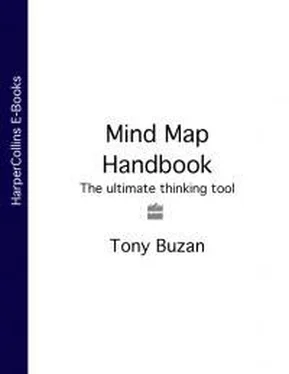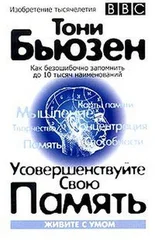First, though, a story, and a few main topics for you to consider, including the multi-ordinate nature of words, once again, the giving of directions and the secrets behind animal communications.
The Multi-Ordinate Nature of Words Revisited
This story indicates just how important it is, in all forms of communication, to realize the internal Mind Maps that exist in the minds of those who receive your communications.
In a classroom for 5-year olds, the teacher asked the children to draw a picture from the Lord’s Prayer.
Most children drew pictures of heaven, clouds, angels, a loaf of bread, a king’s crown, etc.
One little girl, however, drew something quite different and, at first glance, indecipherable. She drew a big circle with two little protrusions at the bottom, and next to is a much, much smaller circle, similarly with two protrusions at the bottom.
After the teacher had marked the assignment, she came back to the classroom and distributed the pictures, generally with high praise for the artists. When she came to the two circles, however, she turned to the child and said: ‘I asked you to draw a picture from the Lord’s Prayer – this is not what I asked you for.’
Eventually, to the teacher’s mortified embarrassment, the little girl’s explanation of what she had drawn indicated that it certainly was a picture from the Lord’s Prayer.
It was a picture of God leading a snot into temptation!

The task facing the Verbally Intelligent with the multi-ordinate nature of words is neatly summed up in this witty statement: ‘I know that you believe that you understand what you think I said, but I am not sure you realize that what you heard is not what I meant!’
This is particularly true in the giving of directions.
Directions
Most people who give directions give them only with consideration to the pictures and structures they have in their own minds. Most people who receive such instructions get lost.
Directions often take the form of the following:
‘To get where you want to go, go down this road a little while, turn left at the pub, go along for a little way further, turn right by the petrol station – now let me see, was it BP, Esso, Shell … I can’t quite remember, sorry, anyway, when you turn, carry on down the road until you see a field with horses in it. After that turn left and the place you want is just down the road.’
No wonder people get lost! The reason for this vagueness is that the person has not yet developed his or her Verbal IQ; he or she has a very clear picture of the appropriate route, but is not yet Verbally Intelligent enough to convey it to another.
The things that are missing are the very things that are essential to a Verbally Intelligent transaction:
Distance. Distance is essential for the brain, it allows the right brain-spatial skills to ‘click in’ and help solve the problem.
Clear, imaginative descriptions of the major landmark images (buildings etc.) on the route. These need to be visually outstanding and different from the rest of the environment.
Time to be taken. Giving the time gives the receiving brain a cross-check on distance.
A Verbally Intelligent version of the directions given above might go something like this:
‘Go down this road for about a mile, and you’ll come to an old black-and-white beamed pub on the corner. Turn left there and go along that road for another half-mile or so, and you will see a whopping great petrol station. Take the right turn immediately after the petrol station, and go past some low white buildings, which look a bit like a long row of matchboxes. Keep on that road for a couple of miles and then you will see a gently rising field with stockade fencing and some horses. Take the next left turn after that field, and the place you want is about 100 yards down the road. It shouldn’t take you longer than 10–15 minutes to drive.’
This far clearer set of directions, accurate as it may well be, will always be checked by the Verbally Intelligent. Why? Because the Verbally Intelligent know that the receiver’s brain may well ‘create’ false data on the basis of what has been said. Giving clear, concise, visual, descriptive and accurate directions is an infallible sign of a person with a high Verbal Intelligence. If they are capable of accomplishing such a feat, this individual will inevitably be successful in all other forms of communication.
It is interesting to note that giving good directions involves using imagination and association, as well as accurate location. This is exactly what a Mind Map does, as a tool for giving clear and accurate directions to you as you travel the highways and byways of your growing knowledge.
Animal Communication
As little as 50 years ago it was thought that animals were fundamentally dumb, and that everything they did was an automatic stimulus-response and not real communication at all.
We now know this to be completely untrue. Dolphins, whales, the apes, all mammals and birds have incredibly sophisticated and complex communication systems. Interestingly, much of this is done with voice and their ‘words’. The rest of their communication is done through their senses and through their body language.
We now know that the sum form of animal-social interaction is almost unbelievably advanced. We now know also that their social structures are highly complex and exceptionally successful.
Animal hunting packs, for example, are often more streamlined than a military unit. Pods of whales have an intricate social structure, and can communicate with those from their pods speaking the same language over distances of hundreds of miles.
What is the relevance of all this to the development of your own Verbal Intelligence?
Simply that by studying the Verbal, Sensual, Vocal and Body Language Intelligence of animals, we can discover many ideas and actions that will enhance our own Verbally Intelligent communications.
Knowing that people rate your intelligence more accurately when they only hear you raises an interesting point. If, for example, you wish to impress someone with your Verbal Intelligence, especially in situations such as job interviews, you might try to ensure that your first contact is by telephone.
You will now be able to apply your knowledge of Verbal Intelligence and Communication in your next Verbal Workout.
Case Study – IQ Speak
Dr Robert Gifford and Dr D’Arcy Reynolds, whose experiment on judging intelligence was covered in Chapter 2.3, report additional findings that are particularly relevant to understanding listening .
It was found that people formed a more accurate and precise opinion of others’ intelligence levels by ignoring visual cues. The judges who watched video-tapes of the subjects’ talking were relatively unsuccessful in guessing the subjects’ true IQ level. However, the judges who listened only to the interviews, without having any sight of the subject on video, had a notably higher success rate.
Verbal Workout
Word Puzzle Number 17
miper
XXX __ X
arope
X __ __ XX
robew
X __ X __ __
thingk
__ X __ __ __ __
Clue: As you are reading The Power of Verbal Intelligence you are developing your: __ __ __ __ __ __ __ __ __ __
Verbal Intelligence Tip
Rearrange the letters in a circular pattern
Rearrange the letters into a circle, with vowels generally near the centre and letters that will probably end up near to each other arranged so that their pattern is clearly visible.
Читать дальше













